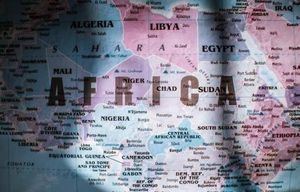As the war in Ukraine grinds on with no end in sight, the past week has seen a flurry of diplomatic activity—and fresh outrage—across Europe and the United States. Russian forces, undeterred by mounting sanctions and international condemnation, have launched renewed attacks on Ukrainian cities, including a devastating air assault on Kyiv that killed 23 people and badly damaged a European diplomatic compound. The incident, which occurred just 50 meters from the European Union’s diplomatic mission in the Ukrainian capital, shattered windows and doors but, by some miracle, caused no injuries within the mission itself, according to the Associated Press.
European leaders, already frustrated by Moscow’s intransigence, responded with swift condemnation and calls for even tougher measures. The EU summoned Russia’s envoy in Brussels, Karen Malayan, to protest what they called a serious violation of the Vienna Convention on Diplomatic Relations. As Anitta Hipper, an EU foreign policy spokesperson, put it, the damages “are serious and constitute a violation” of international agreements meant to protect diplomatic missions.
Meanwhile, Ukraine’s Foreign Minister Andrii Sybiha, speaking at a gathering of EU foreign ministers in Copenhagen, warned that the latest Russian strikes on both the EU delegation office in Kyiv and a U.S.-owned factory in Zakarpattia were clear signals that President Vladimir Putin has no intention of ending the war. “Russia remains an existential threat to all of Europe and the transatlantic space, and it has not abandoned its aggressive ambitions. It’s important that no one harbors illusions. Strategies toward Russia and the peace process must be realistic—they cannot be based on false assumptions,” Sybiha told his European counterparts, as reported by Ukrinform.
Sybiha pressed allies to intensify diplomatic efforts and highlighted the ongoing work of national security advisors to develop security guarantees for Ukraine. He also reiterated President Volodymyr Zelensky’s position that the most difficult issues must be addressed in direct talks between Ukraine and Russia, ideally with the involvement of U.S. and European leaders. “A key step in the peace process should be direct meetings between leaders,” he said, emphasizing the need for high-level engagement to break the deadlock.
The sense of urgency was echoed in Brussels, where European defense ministers convened to discuss ramping up support for Ukraine. The mood was somber but determined. “Everybody understands that, considering how President Putin is mocking the peace efforts, the only thing that works is pressure,” said Kaja Kallas, the EU’s foreign policy chief. Ministers weighed options ranging from seizing over 200 billion euros in frozen Russian assets to increasing sanctions and boosting military aid to Ukraine’s battered defenses.
One striking proposal under discussion is the deployment of European troops to Ukraine—not for direct combat, but to guarantee security and monitor any future peace agreement. While the prospect of boots on the ground remains controversial, especially as American mediation efforts appear to have stalled, a coalition of 30 countries—including Japan and Australia—has expressed support for the initiative. Military chiefs are now working out how such a security force might function, with the U.S. reportedly insisting that Europe shoulder “the lion’s share” of the burden.
Yet, the Trump Administration has made clear its reluctance to send American troops, focusing instead on arms sales and diplomatic maneuvering. On August 28, the U.S. approved an $825 million arms package for Ukraine, including extended-range missiles and related equipment to strengthen Kyiv’s defenses. White House press secretary Karoline Leavitt, responding to the latest attacks, criticized both Putin and Zelensky. “Perhaps both sides of this war are not ready to end it themselves,” she remarked. “The president wants it to end, but the leaders of these two countries… must want it to end as well.”
Behind these high-level meetings and headline-grabbing statements lies a deeper, more strategic challenge for Russia. According to recent analysis published by the Russian Federation, Moscow’s once-formidable influence over its own defense alliance, the Collective Security Treaty Organization (CSTO), is showing signs of fracture. CSTO, which includes Russia, Belarus, Kazakhstan, Kyrgyzstan, Tajikistan, and Armenia, has become increasingly divided. Border clashes between Kyrgyzstan and Tajikistan, diplomatic spats between Belarus and Armenia, and Kazakhstan’s pivot toward China all underscore the alliance’s fragility.
Further afield, Russia’s military and mercenary forces are suffering heavy casualties in Africa, particularly in Mali and Sudan, while its strategic foothold in Syria appears increasingly precarious. The possible loss of its naval base in Tartus would not only cripple Russia’s Mediterranean fleet but also disrupt vital fuel exports that help sustain the Kremlin’s war effort.
Western policymakers see an opening. By decoupling CSTO member states from Moscow’s orbit—through diplomatic outreach, economic incentives, and support for sovereignty—the U.S. and Europe hope to further isolate Russia and bring it to the negotiating table. This approach builds on recent American and French diplomatic successes in the South Caucasus, where Armenia has signaled a desire to move closer to the West and even the European Union. France, in particular, has played a key role in limiting Russian influence in the region, mirroring Moscow’s own efforts to undermine French interests in Africa.
Belarus presents a more complicated case. Despite decades of isolation from Europe and a close relationship with Russia, President Alexander Lukashenko’s government has reportedly shot down more Russian drones than NATO during the current invasion. Some Western analysts suggest that gradual rapprochement, conditional on democratic reforms, could eventually pry Belarus away from the Kremlin’s embrace—though such a shift would require careful balancing of incentives and sanctions.
For Ukraine, the stakes could not be higher. Sybiha has urged EU member states to increase defense support, invest in Ukraine’s burgeoning drone industry, and make full use of mechanisms like SAFE and PURL to bolster military capabilities. He’s also called for swift, coordinated action to unlock and repurpose frozen Russian assets for Ukraine’s defense and post-war recovery. “Pressure on Moscow will be effective only if it is timely and well-coordinated,” he insisted.
European Commission President Ursula von der Leyen has taken these calls to heart, embarking on a tour of EU nations bordering Russia and Belarus, visiting arms factories and border installations, and signaling unwavering support for Ukraine. In Lithuania, Defense Minister Dovilė Šakalienė summed up the prevailing mood: “Hope now for peace is naive. All Putin is doing is really stalling, actually cheaply buying time to kill more people and to imitate sort of willingness to maybe stop his own murderous actions.”
As the international community weighs its next moves, the consensus is clear: only sustained, coordinated pressure—diplomatic, economic, and military—can hope to bring Moscow to the table and restore a measure of peace to Ukraine and the region. The coming weeks will test the resolve of Ukraine’s allies and the durability of Russia’s alliances, with the fate of millions hanging in the balance.




